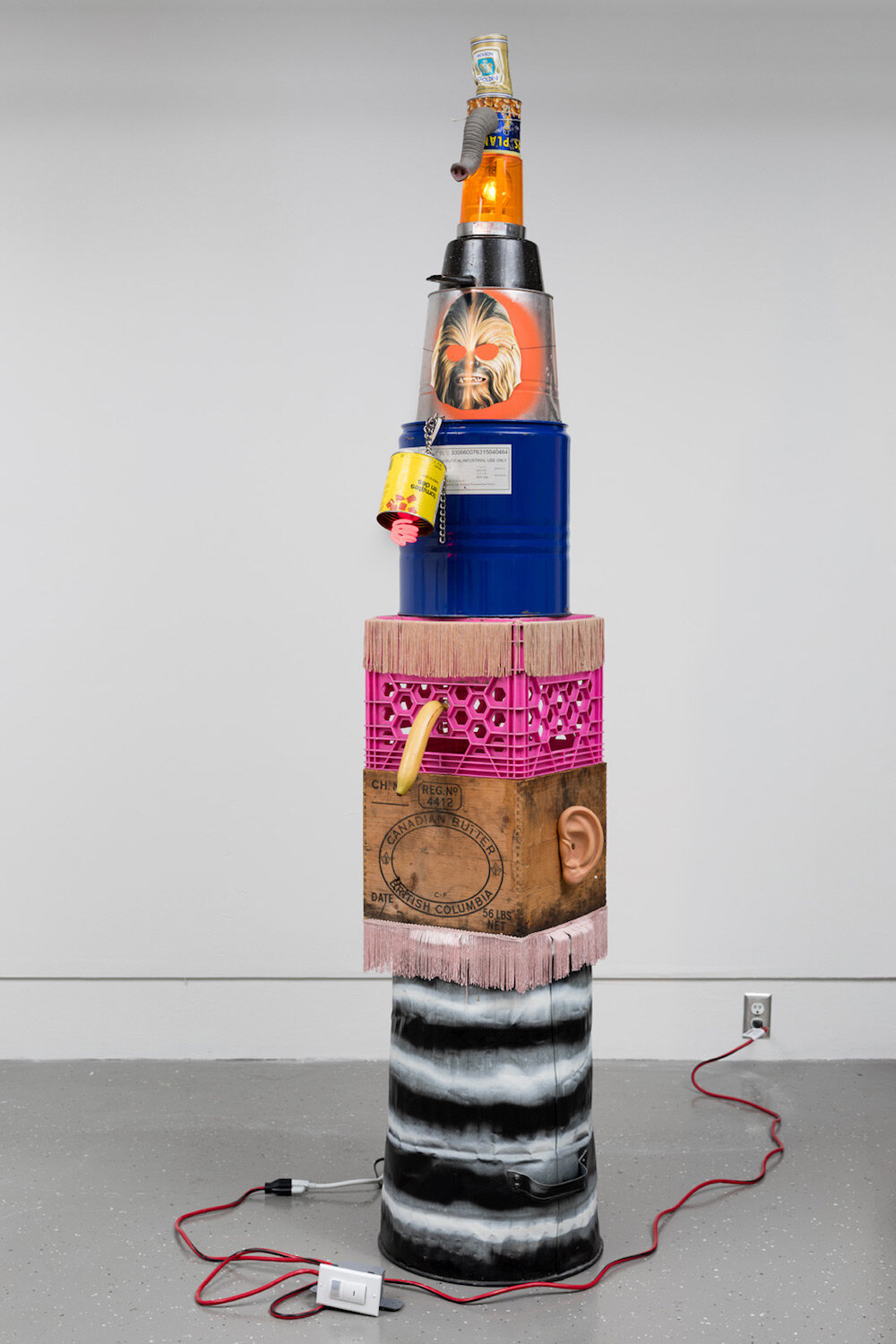Patrick Lundeen’s images are generated primarily by his subconscious through a combination of improvisation and revision. This process involves a combination of freely associating with meanings already existent within the found materials that he manipulates and the generation of new forms that are based on his reaction to these free associations.
Lundeen considers his recent artworks to be abstractions that are based on recognizable motifs and signifiers. The figurative and conceptual elements in each work can be compared to the melody or “head” in jazz music; they are jumping-off points that tie the composition together. Yet, like in jazz, it is the improvisational parts that give the work its emotional qualities and make it a viable work of art. After the work has been completed, Lundeen probes it for meanings and extrapolate on these in further works.
Patrick Lundeen is an artist, teacher and musician born in Lethbridge Alberta (Treaty 7) and currently based in Kelowna BC (Okanagan-Syilx territory) where he teaches drawing at The University of British Columbia (Okanagan Campus) and is a member of the board of directors at the Alternator Centre for Contemporary Art. This past spring, he put out his fourth self-released album (on cassette) as The Oblique Mystic called “Religions of the Grandfather”. Lundeen has a forthcoming exhibition (2022) at the Kelowna Art Gallery and past exhibitions at the Alternator Centre for Contemporary Art, L’Ecart, The Odd Gallery, Katherine Mulherin Projects, Confederation Centre and Wetterling Gallery. He has received research and creation grants from the Canada Council for the Arts, the BC Arts Council and The Conseil des arts et des lettres du Québec and his work has been written about Canadian Art, Border Crossings, the Globe and Mail, the National Post, Time Out Chicago and Flash Art.
Interpretive Essay by Gary Pearson
The Chicken Man has come home to roost after a late-night gig at a popular jive joint. He’s a drummer in a noise band. His energy level is still high. Maybe he’s (still) high? He can’t go straight to bed. The rooster in him won’t fall asleep as morning draws nigh, so he does loosen up exercises, calisthenics, stretches, wind-down movements. His exercise regimen lacks the self-righteous postures of Lululemon, or the focal concentrations of yoga, as he exercises his own way, swinging his arms around as if he were king of the coop, intermittently striking a nearby crash cymbal and anything else within his radial arc. The Chicken Man is in the mood; silently crowing a few greasy black lines from the clown ballad “Nightmare on Cawston Street”.
His temporary white cube domicile is shared with other eccentric music minded occupants, including a gorilla, stylishly attired in a waste basket fez, a Canada goose, an satanic beer drinking white boxing dog who’ll put on the gloves with any and all takers. Don’t turn your back on this madcap household for want of bananas, beer, or boxed ears, or for that matter visual strangulation by electrical extension cords. Let’s call this motley crew of misfits “Noise Farm”.
What motivates the pursuit of unconventionality, of eccentricity, even of bizarre eccentricity? A rejection of, disdain for, or even fear of, conventions and artistic orthodoxies; to be the entertainer and/or the provocateur? A lively imagination might be useful to the pursuit, but there must be something core to the motivation. Would it be necessary to have a well-formed knowledge of models of convention across the fields of style and aesthetics, artistic paradigms and histories, of commodity and consumer cultures, of criticality and creative enterprise, of satire and the turn toward wry self-deprecation, to undertake this pursuit? Or would staging the art work as cleverly contrived outsider art be the motivation to abjure all signs of convention in favor of the absurd and ultra-unconventional? And, what might the objective be in so doing?
The size of the sculptures is consistently referenced to human scale, as are the objects junk store aesthetics and myriad re-purposed components, all serving to soften the alien other worldly effect. Patrick Lundeens’ sculpture is an art of improvisatory assemblage, deliberately positioning the flea market just steps away from the art market. The three fluorescent colored garage sale signs (which read: Garage Sale 3745 Lakeshore) on the walls are a direct mode of address to these economically disparate zones of free enterprise. One would also be well advised to read these as signs of artistic intention, orienting the audience toward the many ironies of arts economies, and in a metaphorical two-minded or two-handed reading how one might slap another in the face while simultaneously slapping oneself. There is no doubt that the garage sale signs are the key conceptual components of the exhibition, and they invite one to relax, but I don’t mean to imply reduce, the necessity of intellectualizing the sculptural objects.
Patrick Lundeen: Noise Farm is a carnivalesque romp through a metamorphosing tableau vivant, where the unexpected must be expected as audience members activate motion sensors, step on foot pedals, and pluck guitar strings, interactively transforming the abject anthropomorphized personages on the stage floor and, not un-ironically, implicating themselves into the clowns’ musical masquerade.






